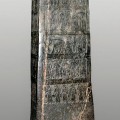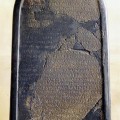Biblical Archaeology Review
Biblical Archaeology Review is the flagship publication of the Biblical Archaeology Society. For more than 40 years it has been making the world of archaeology in the lands of the Bible come alive for the interested layperson. Full of vivid images and articles written by leading scholars, this is a must read for anyone interested in the archaeology of the ancient Near East.
Endnote 2 - Strata: Classical Corner: Pandemics in Perspective
Until relatively recently, it was believed that measles was a potential culprit for the Antonine Plague. However, a 2010 study suggests that the measles virus in its current iteration did not evolve until the 10th or 11th centuries, making a variation of smallpox the most likely candidate for the pandemic of the Antonine era. See Yuki Furuse, Akira Suzuki, and Hitoshi Oshitani, “Origin of Measles Virus: Divergence from Rinderpest Virus Between the 11th and 12th Centuries,” Virology Journal 7 (2010).
Endnote 4 - Strata: Classical Corner: Pandemics in Perspective
Endnote 1 - Strata: Classical Corner: Pandemics in Perspective
Endnote 3 - Strata: Classical Corner: Pandemics in Perspective
See Kyle Harper, The Fate of Rome: Climate, Disease, and the End of an Empire (Princeton: Princeton Univ. Press, 2017), p. 115. Yan Zelener suggests the mortality rate was even higher with a range of 22–24 percent; see Yan Zelener, “Genetic Evidence, Density Dependence, and Epidemiological Models of the ‘Antonine Plague,’ ” in Elio Lo Cascio, ed., L’impatto della “Peste Antonina” (Bari: Edipuglia, 2012).





